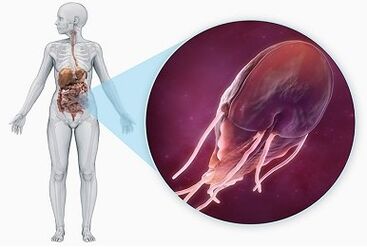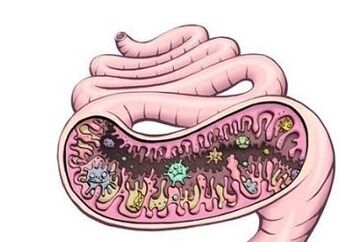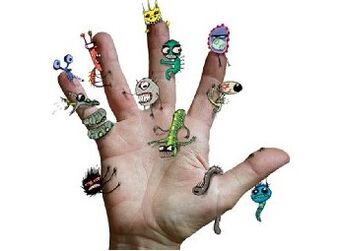

The species differenceThe simplest people of a person differ in structure, the method of inintroduction in the body and has caused diseases. For the best structuring of information, the main material on unicellular organizations is briefly presented in the table.Some representatives of protozoa is parasit themselves in the human body, their brief description:
Type, caused the disease and organ systems, subject to damage Symptoms Ways of infection, carriers Infected step in the life cycle of parasitesThe class is flagellatedLeish-manieCutaneous leishmaniasis or Ulcer from Pendinskaya, visceral leishmaniasis or Kala AzarThe skin, the mucous membranes, the blood, the heart, the adrenal glands, the kidneys, the bone marrowCutaneous leishmaniasis is characterized by the formation of necrotic ulcers on affected areas of the skin. Visceral leishmaniasis causes acute inflammatory reactions of affected organs, with ulceration and hemorrhages.They fall into blood circulation with a mosquito bite, with its saliva. Carriers - Hot blood animals, including humans; The carrier is a mosquito.Promastigote (Flaglate the shape of the body).BladeLambliosisThe mucosa of the small intestine, the gallbladder.Enteritis, allergies, asthma, depression, nervous disorders, cracks, dry skin, cholecystitis, etc.The fecal-oral path of infection through food and water. Carriers - Hot blood animals, including humans; Carriers - Synanthropic insects (flies, cockroaches).Stage of cysts.Trichomonas (intestinal, genito-cross, mouth)TrichomonaseThe large intestine, the genito-the-first system, the oral cavity.Itching, burns in the genital field, discomfort during urination, an abundant unhealthy outing of the genitals. Complications with the development of infertility are possible.Sexual path of infection; through the mouth; through the rectum; When the inhaled air; It is possible to transmit parasites during childbirth from mother to child. A carrier and a carrier is a person.Any stage of the life cycle: Flagellate (adult), amiboïde (intermediate, the most invasive), cyst.TrypanosomeAfrican tripanosomosis or sleepy disease; American tripanosomosis or Chagas diseaseBlood, lymph nodes, spleen, vertebral liquid.An increase in lymph nodes, pathological processes in the races liver, damage to the nervous system is characterized by excessive drowsiness, and a fatal result often occurs. The disease develops up to two years. Enter blood circulation during the insect bite with its saliva; During the blood sides. The carrier is animals with hot blood, including humans, a carrier - a tseche fly (African tripanosomosis), a tritomic bug (American tripanosomosis).Trypostigote stage (characteristic of the membrane oscillation and the ability to move).Spore classToxoplasmToxoplasmosisNervous system, eyes, muscles, digestive organs.The latent and chronic form takes place asymptomatic; Symptoms of an acute form manifest themselves in the affected organs. The most dangerous for pregnant women and newborns leads to serious disorders and congenital pathologies, until the death of the fetus.Fécal-oral path of infection through unprocessed milk, meat; with insect bites; During the pregnancy of the mother to the child. Hardness and carriers are hot blood animals, including humans.Stage of cysts.Malaria plasmodiumMalariaLiver, red blood cells. An increase in body temperature, chills, fever, can cause serious kidneys, a nervous system, a deadly result is possible.Enter a person's blood flow during a bite with an insect saliva; transmission during the pregnancy from mother to child; During the blood sides. The carrier is a person, a carrier is a mosquito for malaria.Sporosoist stage (the final form of the sex cycle of sporiks).Infusoria classBalantidiumSwingThe mucosa of the large intestine.The ulceration of the mucosa of the large intestine is accompanied by a diarrhea of blood mesh, and the fatal results often occur.The fecal-oral path of infection through fruits, vegetables, not transformed pork. The carrier is a pig, a carrier - synanthropic insects (flies, cockroaches).Stage of cysts.SarcodesDYSENTERIA AMIBEAmibiaseThe mucous membrane of the big intestine, sometimes the bladder, the skin.Asymptomatic and demetative form The form of the disease. The intestinal friend is manifested by bloody diarrhea and vomiting; Extra-decranant friend is characterized by acute liver lesions, lungs and other organs.Fécal-oral path of infection through vegetables, fruits, greens; Anal sex. The wearer is hot blood animals, most often, humans, carriers - synnanthropic insects (flies, cockroaches).Stage of quadricoles cysts.
As a general rule, for all protozoa, a very complex and multi-stage life cycle is characterized by a very complex and multi-stage life cycle, which includes stages of activity and functions and functional functions of the scene.Unicellular organizations most often occur by a simple cell division in two, but certain classes, as well as division, are also inherent in a more complex reproduction process with the exchange of genetic information, for example, representatives of the Fladella class.In addition, protozoan life forms are not universal for all classes. Various stages of the life cycle of parasites can take place in organisms of different animal species. 
Thus, some of them are constant owners, carriers of the parasite, while others play the role of an infection carrier. In addition, the individual stages of the life cycle can take place within the same individual, but in different organs.The symptoms of invasion depend on the stage of the life cycle of the parasite, the resistance of the human body, the degree of infection and location. Often, the disease is accompanied by non -specific symptoms, as a result of which the diagnosis of infection by protozoa is always extremely difficult.According to the latest WHO data, more than a billion people are infected with parasites. The worst part is that parasites are extremely difficult to detect.nervousness, weakness, drowsiness;Frequent headache;Itching, allergic reactions;smell of the mouth, plate on the teeth and tongue;body weight change;diarrhea, constipation and pain in the stomach;Exacerbation of chronic diseases.These are all possible signs of parasites in your body. The parasites are very dangerous, they can cause deadly diseases. Diseases caused by parasites take a chronic form.
Some representatives of protozoa is parasit themselves in the human body, their brief description:
| Type, caused the disease and organ systems, subject to damage | Symptoms | Ways of infection, carriers | Infected step in the life cycle of parasites |
|---|



















